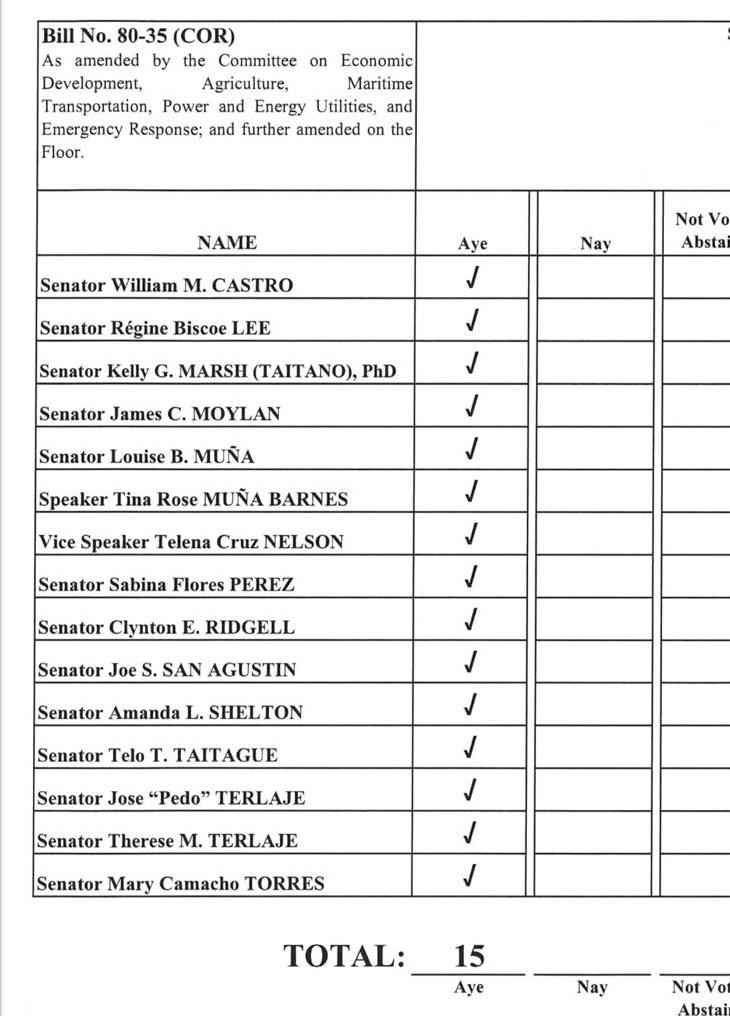People have been giving us information since we started Kandit back in 2018. That meant we had a little more than a year before the pandemic… Before the whole world became infested by an invigorated fringe element bent on this insane mission to prove that for centuries a cabal (generally, this took a racist angle) of people conspired and continues to control the flow of information.
At first – and very much warranted – some people, particularly here in Guam, were upset with the lack of communication from the government about the need for restrictions to our liberties during the pandemic. But then things got weird.
The conspiracy theories went from bad to bat doodie crazy, starting with the callous rumors that footage of hospitals (in cities throughout the world) too crowded to save the lives of people drowning with the first wave of the virus were faked. These rumors were heartless to the suffering of the families of 350,831 people who died in 2020 in the United States alone due to complications from the virus. Or the 14.91 million throughout the world who succumbed to coronavirus complications in the first 24 months, according to the World Health Organization.
Amid the chaos of that time, medical researchers were able to do what could not be done in human history: engineer a vaccine within months that would reduce mortality for those exposed to the virus. The mRNA technology not only became useful to ending the pandemic, but according to infectious disease professionals, how it works is offering new hope for health against viruses like HIV.
 Despite the work of thousands of the world’s leading scientists with research published and peer reviewed since that time, misinformation based on everything from hunches to nonscientific theory to the “research” of doctors on the fringe of “medicine” continues to circulate.
Despite the work of thousands of the world’s leading scientists with research published and peer reviewed since that time, misinformation based on everything from hunches to nonscientific theory to the “research” of doctors on the fringe of “medicine” continues to circulate.
We stayed out of the whole vaccine debate. The only editorial we provided was this: Go talk to your doctor; you might want to do what he or she says is right for you.
The reliance on “voodoo science” by a vocal fringe doesn’t stop with the pandemic. The effort to repaint history has led to enough people either forgetting the horror of the Holocaust or believing altogether that it didn’t happen. Look at the anti-Semitism in the wake of Hamas’ egregious terrorist attack on Israel. Scientifically unsupported “facts” continue to circulate about many more issues from the fringe.
From the 9-11 attacks on the World Trade Center to the landing on the Moon to the reality of climate change and even to the trigonometry of the spherical nature of the Earth. We get all these “studies” and “news stories” from sources who want us to encourage these conspiracy theories. We’ve ignored all of them. But I wonder if ignoring this fringe element rather than debunking them serves to further undermine progress in society.
Solar farms, the environment and the cost savings to power bills
Last week I got a hold of testimony provided to Speaker Therese Terlaje, whose committee has been holding onto Bill No. 179-34. That bill is among a handful Kandit has advocated due to the potential these bills provide to making homeownership more affordable.
Unlike the other bills, 179 has a dual function. Aside from its potential of opening up hundreds – if not thousands – of residential lots to development, it will authorize the conversion of the Guam International Country Club in Dededo to a solar farm.
I’ve stayed away from the renewable energy angle to this story, mainly because I was too lazy to review the credible, scientific research on utility scale solar farms. But after reading what this one citizen wrote to senators, I feel compelled to address this head on.
According to Carlos Camacho, a local housing expert and consultant for the owners of GICC who are requesting for the conversion authorization, the new solar farm will provide 65 megawatts of electricity that will be sold to the Guam Power Authority through a power purchase agreement (PPA). That is the standard arrangement between GPA and the private owners and operators of the other two solar farms and one pending completion. If completed, this will become Guam’s largest solar farm, providing the single-greatest amount of renewable energy.
To put this into perspective, that solar farm alone would be able to power all of Guam Waterworks Authority including its water wells and Guam Memorial Hospital. Those two agencies combined pay close to $30 million to GPA every year, according to an April 2024 presentation by GPA general manager John Benavente.
On average in 2023, residents paid 37.8 cents per kilowatt hour for power, which included: fuel recovery rate (LEAC: Levelized Energy Adjustment Clause) of 27.6 cents per kilowatt hour plus 10.2 cents per kilowatt hour for the base rate. The current LEAC is 26.1995 cents per kilowatt hour.
By September 2025, according to Mr. Benavente’s presentation, the Ukudu Power Plant will come online, driving down the need to burn 2.7 million barrels of fuel per year to just two-thirds of that amount: 1.8 million barrels. The figure comes out to 36.9 million gallons of fuel GPA will no longer have to purchase and burn into the atmosphere annually once Ukudu comes online. Once that happens, the LEAC will be reduced to 13.7 cents per kilowatt hour, driving down residential power bills to 23.9 cents per kilowatt hour.
As this is happening, GPA will be adding PPAs with new solar farms to complement the two in operation and the one pending in Dandan. By 2027, GPA hopes to have added significantly more solar energy to the grid, so much so that it will no longer need to purchase and burn another 25.8 million gallons of fuel.
By 2027 – if these solar farms come on board despite the voodoo science coming from the fringe – Guam will have reduced fuel oil dependency by 55 percent of the current levels. Not only that, this goal will reduce the emissions of 1 million gallons of sulfur dioxide pollution.
Despite these facts, here is the testimony (I won’t provide the name of the person who submitted it) against the 179 solar farm-affordable housing bill:
_____
Dandan Inalahan Solar Farm: According to PV Magazine, July 25, 2022, Clear Capital Investment acquired the 36.6 MW Solar Project from GlidePath Power in Inalahan. It’s providing 6% of the grid’s electricity demand. And it’s been in operation since 2015…
But according to PDN, Jan 28, 2024, … GPA’s contract for the incomplete Solar Farm in Dandan, Inalahan, will get extended for about another 2 years, with the Public Utilities Commission approving a change to the deal. It further states… Hanwha Energy Corporation will have until the end of 2025 to deliver on the Solar Project to be finished in December 2023. Pointing to skyrocketing costs for the project, Hanwha never got the Solar Farm off the ground, leaving GPA in jeopardy of violating a settlement with the US Environmental Protection for violating the Clean Air Act.
Sasayan, Mangilao Solar Farm: Guam PDN, May 6, 2022 Title: “AG settles for $950,000 over the Marbo Cave incident.” The Office of the Attorney Gen has reached a $950,000 settlement with the owner and contractor of the Mangilao Solar Project after an environmental disaster last year left the historic Marbo Cave under layer of sludge and damaged the surrounding Sasayan Valley. Up to this date Marbo Cave is closed, the once clear pristine water is still murky sludge.
These 2 Solar Farms—Dandan Inalahan and Sasayan Mangilao Solar Farms should by this time benefitting already the people of their communities, and the people of Guam as a whole. Each of these two farms are said to be providing 6% of the grid’s electricity demand. But what they brought are problems and disappointments to the people.
GICC has been place for relaxation and bonding of family and friends for decades, not just a place for golfing for those golf enthusiasts. Its landscape brings serenity to those who go there. GICC is surrounded by patches of neighbood. Converting GICC to a Solar Farm, a solar farm in the midst of neighborhood is ridiculous! We already have 2 Solar Farms that up to now haven’t delivered what they were contracted for… only damages they brought… here… this GICC, in the midst of neighborbood… we want to take risk?!! There are places suitable for solar farms, NOT in residential areas!
Reasons:
According to some studies, there are some health disadvantages of living near a solar farm because of people’s exposure to electromagnetic field (EMF). Solar panels generate electricity through the photovoltaic effect, which involves the movement of electrons in the panels’ cells. The process produces low-frequency EMF’s. Long-term exposure to it may increase risk of cancer, and there too is a potential effect on nervous system especially to sensitive people like pregnant women and children.
Another thing, land transformation can disrupt local ecosystems, displace wildlife, and alter natural drainage patterns, potentially affecting water quality and soil fertility. Example, the Marbo Cave.
A study conducted by University of California, Berkely, found that solar panels can increase local temperature by up to 5 degrees Celcius. Solar panels can contribute to heat stress and the urban heat island effect, particularly in warm climates.
Solar panels can also pose a fire hazard, particularly if they are not properly maintained or installed. In addition to the direct damage caused by fires, the chemicals used in solar panels, such as polyvinyl chloride can release harmful dioxins when burned, further increasing the health risks.
Solar farms consist of thousands of panels, each equipped with reflective surfaces designed to capture and concentrate sunlight. While this is essential for energy production, it can also lead to issues related to glare. Glare occurs when sunlight reflects off the panels’ surfaces, creating intense burst of light that can be discomforting and potentially hazardous to the eyes. Inverter Stations of Solar Farms that convert the DC to AC, can emit a constant humming noise during operation. For individuals living in close proximity to these stations, this persistent noise could lead to sleep disturbances, stress, and other negative health impacts associated with noise pollution.
A new research from Lawrence Berkely National Laboratory has found that solar farms reduce property values of homes within half a mile by an average of about 1.5%
Are these not enough reasons to take risks converting GICC to Solar Farm, a solar farm in the midst of people’s neighborhood??
——
The problem with this testimony is the problem we face amid the powerful misinformation campaigns about the pandemic, the World War II annihilation of 6 million Jewish people, the plight of the Ukrainians, and the science of vaccinations, to name a few: It almost sounds well-informed and provided in context.
But the context – aside from the regulatory concern about Marbo and the compliance concern about Hanwha’s Dandan pending site – is propaganda.
First of all, this testimony is misinformed on its face about the current solar farm contribution to the electrical grid, which is at 13 percent, rather than the stated 6. And that’s because the author provided false information about the two, rather than one, sites at Dandan. Since 2015 there has been a solar farm in Dandan generating about 25 megawatts of electricity to the grid. The Hanwha solar farm she mentions is the second one, which had to be delayed because of the pandemic and then due to the rising costs of development that occurred with inflation.
The Marbo solar farm continues to be in operation, contributing about 60 megawatts to the grid. That is a total of 85 megawatts in utility scale solar farm generation, with another 40 to 60 MW on the way when the Hanwha Dandan site goes online, bringing the renewable contribution to the grid closer to one-fifth of energy production, and to full compliance with GPA’s obligations to the Department of Justice and the Environmental Protection Agency related to the Clean Air Act.
The Marbo farm currently links into storage facilities so that energy generated while the sun is out gets stored for nighttime usage. The Dandan one in operation does not. However, the second Dandan farm and all future solar farms will feed into these so-called battery storage units contained in Agana and in Talofofo.
As for the inverter noise pollution claim, “While solar panels do not emit sound, inverters are the only primary component of a solar project that produces sound. These inverters are typically at least 100 feet from the nearest dwelling, and the sound of inverters from this distance is no higher than 38 decibels (dBA), quieter than a refrigerator hum,” according to the American Clean Power Association, which based this claim from research by Kimley-Horn, LLC and the National Renewable Energy Research Laboratory.
“Another thing, land transformation can disrupt local ecosystems, displace wildlife, and alter natural drainage patterns, potentially affecting water quality and soil fertility,” she wrote. Right. Because the already-cleared and graded land that made way for the golf course didn’t already do this. I’d really love to hear the science that tells us the continuous use of pesticides for a golf course that seeps into the aquifer is somehow more environmentally sound than a solar farm which will reduce the purchase and burning of 13 million gallons of fuel yearly.
Then there’s the claim that a study shows property values around solar farms decreased by 1.5 percent. Even if that were true and assuming the homes around the area were valued at around $400,000: Over a 30-year mortgage that comes out to $16 a month compared against the savings of an estimated $250 a month in the average residential power bill once Ukudu is up and the island meets the 50 percent renewable generation threshold assigned by law.
Just to be sure I looked up that report. What it actually says is that solar energy production is becoming less expensive, more environmentally friendly, and its national market value has risen by a whopping 40 percent in 2022 because of the rising price of fuel energy.
You know what is an actual, fact-based criticism of solar panels worth considering? That 95 percent of a key raw material in its construction comes from China, and that China uses 2 million slave laborers to get that raw material: polysilicon.
According to the U.S. International Trade Commission, “95% of solar panels worldwide are made up of polysilicon. Nearly half of global production comes from Xinjiang, where polysilicon is produced by Uyghurs and other Muslim minorities under conditions of forced labor.”
The Chinese government has enslaved nearly a million minority Uyghurs in the Xinjiang region in order to produce the raw material.
“[T]he U.S. toolbox for restricting imports is currently limited,” according to a report by the Center for Strategic and International Studies. “Section 307 of the Tariff Act of 1930 prohibits importing any product that was mined, produced, or manufactured wholly or in part by forced labor.”
“Of course it’s against US customs regulations to import anything made by involuntary labor, but you know how much China loves following regulations,” Kandit’s Mabel Doge Luhan pointed out.
If senators want to have a real debate about the value of utility scale solar farms to our people, here is where the legislature can really elevate the public discourse. Ask where the polysilicon in the solar panels is coming from for this proposed solar farm.
It is part of a fact-based, in context discussion on the issue, and not from some pieced-together propaganda piece.
 But here’s the thing. This discussion should have been made back in 2019, when all 15 senators approved Amanda Shelton’s legislation mandating that by 2035, at least half of the island’s power production would come from renewable sources, of which solar dominates for all the obvious reasons.
But here’s the thing. This discussion should have been made back in 2019, when all 15 senators approved Amanda Shelton’s legislation mandating that by 2035, at least half of the island’s power production would come from renewable sources, of which solar dominates for all the obvious reasons.
It is because of that law that GPA reshaped its power plan. And to that agency’s credit, it is on track to achieving the goal eight years ahead of schedule. That goal will mean we all will be paying far less in power bills than we do now.
“The money spent on purchasing fossil fuels for power production leaves the local economy and increases the island’s capital flight,” Ms. Shelton wrote in her legislation. “Any money saved on purchasing fuel for power production would stay in the local economy. Renewable energy therefore provides an avenue for reducing capital flight by creating a closed-loop power generation system and advancing a more circular economy. It is appropriate, then, to raise our renewable portfolio standards to match our current capabilities as we continue to modernize our island.”
Senators, it is your law – your mandate – that GPA raise the production portfolio to at least 50 percent renewable energy by 2035. The GICC solar farm proposal will accelerate that schedule. Most importantly, it will help us to achieve power bill savings faster.
Leave the quacking to ducks. Good, verifiable information saves lives. And lowers power bills.












2 Comments
John Henry Biden
06/18/2024 at 3:47 PM
A well written article. Let’s Do this Guam. Senators approve the use for the Solar Farm. The CLTC will have its infrastructure monies to build the necessary items to develop more housing for the less fortunate.
Anything to help the people of Guam save money for other needed items.
L Forest
02/04/2025 at 5:05 PM
I am sending you a detailed rebuttal to your article in regard to the GICC property.
As Carlos Camacho stated in the January 16, 2025 presentation to CLTC. “The numbers presented to different Government of Guam Agencies and the Legislature are estimates. Until a valuation has been done for the business venture we can not say what the total financial benefit to CLTC will be.” With failed management and protection of nearby property from illegal soil erosion, the inability to finish a project, and the unknown of how these private public partnerships will end after the 18 year life of solar panels then in the hands of GPA. GICC has a small contribution to the Grid and a large impact on the real estate value of 5,000 adjacent households. This value exceeds by far the speculation of a $9 million 30 year payout to CLTC.